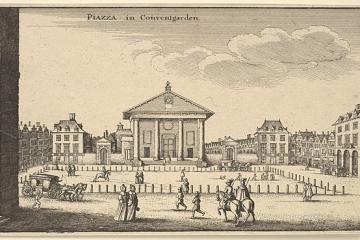In this 3-part study day, we chart the highs (and lows) of one of London’s most vibrant and fascinating neighbourhoods.
We begin with the area’s surprising Saxon origins to its takeover by the monks at Westminster Abbey. Following the Reformation, the area changed hands again and in the early Stuart era the first planned square was developed by the Earls of Bedford and architect Inigo Jones. By 1670, the area was inextricably linked to the theatre and a daily market was established which thrived until 1974.
In and around the seemingly elegant squares of Georgian London lay a sordid world of licentiousness and lust; a world which surprisingly made a huge contribution to London’s economy. Using Hogarth’s The Harlot's Progress as our pictorial guide, we embark on an extraordinary and eye popping adventure of the low lights and lowlifes of 18th century Covent Garden and Soho. We encounter a celebrity cast of characters including Jack Harris author of Harris's List of Covent Garden Ladies (the Time Out guide to the leading harlots of the age). We meet ‘Mother Clap’, whose infamous ‘molly house’ brought her to trial.
Two legendary theatres gave birth to modern West End theatre. In 1663, following the restoration of the monarchy, King Charles II revived the fortunes of British theatre. After 18 years of closure, he issued two royal licences to two men, Thomas Killigrew and William Davenant. These royal licences laid the foundations of the present-day Theatre Royal Drury Lane and the Royal Opera House, Covent Garden. We meet the men that shaped the buildings and starred at the theatres: David Garrick, Richard Brinsley Sheridan and Augustus Harris.






